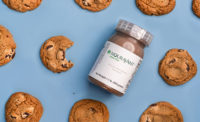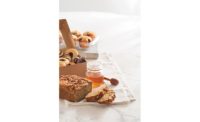We have been chasing the “clean-label” ideal for so long that you’d think we’d have caught it by now.
But then 2020 arrived, the world caught COVID-19, and the industry’s been playing catch-up ever since, trying to make sense of the year gone by and what it means for snack and bakery formulations going forward.
And here’s the catch: It may mean that clean labels will be even more “essential” than before, as consumers spooked by the coronavirus scrutinize every purchase with an eye toward its effect on health.
And that means that snack and bakery developers will be scrutinizing every ingredient’s potential impact on clean labels, as well as finished-product durability, intra-formulation functionality, and the sensory appeal that consumers crave. It’s a tall order, but as 2020 proved, we can do hard things.
FIRST, THE BAD NEWS …
On one hand, the coronavirus could have dealt a blow to the clean-label movement. As DeeAnn Roullier, marketing research insights specialist, Cargill, Minneapolis, points out, “It heightened consumers’ appreciation for the longer shelf life of processed foods.”
Nick Ferraro, marketing manager, DuPont Nutrition & Biosciences, St. Louis, also notes a switch among shoppers from fresh and store-made baked goods to “more prepackaged bread items.” And while the panic-buying that marked the pandemic’s early days has largely passed, “Stockpiling is still having minor effects and in doing so is giving extended shelf life more center stage as consumers balance it against clean labels in some categories,” he says.
And it’s no secret that COVID-19 hit shoppers’ pocketbooks, convincing some to forego often-pricier clean products. “For these individuals,” says JoAnn Rupp, global market insights manager, Corbion, Lenexa, KS, “the primary concern shifted to purchasing traditional staples at more affordable price points, and simply sourcing what was available at local retailers.”
… AND THEN THE GOOD
But COVID-19 hasn’t been all downside for clean labeling.
Nielsen reports U.S. sales of organic products—often associated with “clean”—outperformed total food and beverage from March 21 to Nov. 28, 2020, Roullier says, “suggesting that consumers will pay a premium for organic even in this time of heightened insecurity.” The same data also show clean claims like “no artificial sweeteners,” “contains stevia,” “non-GMO,” and “natural” outperforming total food and beverage.
Which brings us to a third factor, continues Roullier: health. “Consumers have been aspiring to cut back on ingredients they perceive as less healthful for a while, and at least among some, the COVID-19 health crisis has accelerated their focus on the healthfulness of their overall diets.”
What’s more, Rupp notes, COVID-concerned shoppers are shopping to shore up their internal defenses, choosing snacks and baked goods that contain “natural” ingredients they perceive as good for immunity. Whether or not those perceptions are accurate, they’ve translated into demand for baked goods packed with seeds, grains, fruit and vegetable inclusions, and added protein and vitamins, she says.
“Whether consumers are looking for less of the bad or more of the good, they seek balance, which makes sense during uncertain times,” says Jennifer Stephens, vice president of marketing, Fiberstar, River Falls, WI. “By eating healthier and making lifestyle changes, consumers regain that sense of control.”
Bill Hanes, vice president, marketing and strategic planning, Lesaffre, Milwaukee, WI, even sees a link between that craving for control and the wave of home baking that characterized the pandemic’s outset. “Consumers enjoyed creating their own baked goods while managing ingredients,” he notes, “and it makes sense that they’d now expect the same level of ingredient control in the items they buy.”
WHAT CLEAN MEANS
Lesaffre conducted a study with C+R Research to learn more about what clean-label consumers expect, and one key lesson, Hanes says, was that while most associate “clean” with fewer preservatives, more “natural” ingredients, and minimal processing, “We found that interest in and definitions of clean-label vary greatly by generation.”
For example, the study’s baby boomer respondents were more driven by taste than were Millennials and Gen Xers, who gravitate toward brands that align with their clean-and-healthy lifestyles. His conclusion: “It’s impossible to state that ‘American consumers’ feel a certain way about clean labeling, because there are too many generational differences among Americans.”
Ferraro also sees “clean” as “very much in the eye of the beholder—and the category they’re looking at.” Case in point: a consumer who’d ignore an artificial emulsifier in a chocolate confection might balk at its presence in loaf of bread, he offers. Similarly, “A Dave’s Killer Bread consumer and a Wonder Bread consumer are both eating leavened bread, but their individual definitions of clean label could be—and probably are—entirely different.”
Either way, the umbrella is expanding for what clean means, observes Mel Festejo, COO, American Key Food Products, Closter, NJ. Non-GMO, non-allergenic, organic, plant-based, nutritionally balanced, high-fiber, high-protein, low-sugar, low-sodium, gut-friendly, gluten-free, Paleo-friendly, and more: All are adding their names to what he calls “a constantly growing list” of clean-label qualifiers.
CLEAN GOES GREEN
Consumers are even asking that “clean” go “green.” Allison Leibovich, senior technical service specialist, bakery, Cargill, has seen clean expectations extend to issues of sustainability, transparency, animal welfare, and more as consumers—especially younger ones, she says—“look for products they perceive as healthier for them and the planet.”
That’s driven calls for transparency and traceability throughout the supply chain. Healthy Food Ingredients, Fargo, ND, even fired up two new mills in October 2020—one dedicated allergen-free—to provide complete supply-chain traceability and vertical integration for its clean-label milled ingredients. “Consumers are seeking products that tell a story, beginning with how ingredients are sourced and grown,” explains Jennifer Tesch, chief marketing officer. “So sustainable and regenerative practices are playing a larger role in clean labeling as consumers expect brands to have a clean image and conscience, as well.”
PRODUCT PRIORITIES
But just as consumers’ definition of clean is expanding, so, too are their preferences for which snack and bakery products they’d prefer be clean.
Tesch notes children’s snacks have become “more of a priority for families, especially with distance learning and more time spent at home during the pandemic.” And while most of the clean-ingredient requests Healthy Food Ingredients fields come from retail customers, “consumers are beginning to push for clean, healthful products in foodservice, as well,” she says.
Hanes thinks white and whole-wheat pan breads have the most room for improvement to their long ingredient lists, and notes “many brands selling pan breads have already set goals to reduce the number of ingredients in their formulations and to use natural alternatives where possible.”
Rupp expects to see more functional foods, as well as products covering a wider price range, join the clean ranks. “The pandemic pushed a lot of consumers to the center aisles where they’re picking up prepackaged breads and other baked goods from brands they recognize,” she says, “and manufacturers are beginning to catch on.”
HARD NUTS TO CRACK
Many of those “unclean” ingredients on the R&D chopping block have a track record for delivering the functional qualities that commercial snacks and baked goods require—and that cleaner alternatives don’t always deliver.
By shrinking the R&D toolbox, clean formulation can also eliminate ingredients that perform multiple functions at once, and at efficient use levels—another trick that clean alternatives can’t always pull off on their own.
Synthetic emulsifiers offer a case in point. “They’re extremely valuable tools for commercial bakers,” Rupp points out, “allowing them to produce high-quality, freshly baked goods at an affordable cost thanks to better process tolerance in doughs and emulsion stability in batter-based sweet goods. Removing them—or any traditional ingredient, really—can have unintended consequences on production costs, tolerance, and shelf life.”
Making matters worse, the behavior of novel clean ingredients can be something of a black box in application. “New technologies are being developed for clean-label ingredients, but with any new ingredients comes a learning curve to understand how it produces the taste and textural properties customers look for,” says Brock Lundberg, Ph.D., president, R&D and applications, Fiberstar.
CLEAN SWEEPERS
Fortunately, ingredient suppliers are scaling that curve, and bringing snack and bakery developers along with them.
Leibovich notes that among the trickier bakery ingredients to replace are the aforementioned synthetic emulsifiers, including DATEM and mono- and diglycerides. One of Cargill’s solutions swaps them out with a combo based on plant-based lecithin—“a time-tested ingredient”—and select enzymes. “As an added bonus,” Leibovich notes, “this combination can eliminate the entire dough-conditioner package without adding a single ingredient to the label, as enzymes and lecithin are both already commonly found in breads.”
Mohammad Emami, senior product manager, Bartek Ingredients, Stoney Creek, Ontario, expects to see rising demand for premium, better-for-you multigrain and artisanal breads, but notes that formulating such products affordably—particularly, minimizing ingredient cost-in-use—“is key to successful commercial baking.”
In late 2019, Bartek introduced its Upscale clean-label fumaric-acid-based bread technologies to help commercial bakeries produce artisan breads profitably at industrial scale. The ingredients enhance finished-product features like volume and porosity, increase process efficiency by reducing mix times, trim ingredient costs, extend shelf life, and improve the eating experience—all while obviating the need for objectionable preservatives like calcium propionate, Emami says.
What’s more, says Alejandro J. Perez-Gonzalez, lead technical advisor, bakery innovation, Bartek, fumaric acid is “a key tool” in tortilla production, where it achieves good leavening for a more-desirable cell structure, helps maintain a mold-free and shelf-stable product, and can even potentiate the action of both traditional preservatives—think calcium propionate—and “clean” ones, such as fermented and cultured options.
For bakeries hoping to cover their clean bases organically, Cam Suarez-Bitar, director of marketing and public relations, Bellarise, Pasadena, CA, notes available organic dough conditioners can improve texture, crumb structure, and volume in “a broad range of breads and rolls.” Meanwhile, the BellaSOFT Organic 1500 Plus ingredient extends shelf life in buns, rolls, and artisan-style breads, and the company’s non-GMO deactivated yeast acts as a natural L-cysteine replacer that improves dough extensibility and provides “a subtle flavor note, depending on its use.”
The company’s organic gluten and sugar replacers not only cut production costs, Suarez-Bitar suggests, “but help bakeries customize their breads’ key sensory attributes while ensuring the right flavor every time.”
Over in the tortilla aisle, Bellarise’s organic tortilla improver controls production costs, optimizes toast marks, and produces more-pliable tortillas.
Moving to the snack space, Chad Rieschl, senior research food technologist, Cargill, notes that as consumers swear off corn syrups of all types, Cargill’s ingredient-processing teams have responded with a line of tapioca-based alternatives that exhibit the same carbohydrate profiles and DEs as, and perform nearly identically to, their corn-syrup equivalents, “allowing for one-to-one replacement with little to no additional formulation work.”
But no matter which ingredients they aim to replace, Hanes concludes, manufacturers need to examine all angles to get clean reformulation right. Some alternatives to synthetic emulsifiers can be sensitive to temperature, cook time, pH, and even environmental factors in individual bakeries, he says. “We start with an ‘off-the-shelf’ solution and customize it to accommodate the parameters of their specific bakeries. Custom-formulating this way is critical to producing baked goods that don’t sacrifice quality for clean labels.”
LOOKING AHEAD
That quality piece is critical going forward as clean-label snacks and baked goods keep evolving and expanding.
Now that COVID has reawakened consumers to wellness, Leibovich expects to see a nexus between “clean” and “better-for-you” yielding a “proliferation of snacks and baked goods infused with ingredients designed to give a nutritional boost.” This opens the door for plant proteins and fiber, she says, “especially with interest in digestive health on the rise.” She wouldn’t even be surprised to see plant sterols and postbiotics—touted for immune support—winding up in snack and bakery products.
But that’s the sunny outlook. If the pandemic’s effects linger, Rupp predicts, manufacturers may “have to make tough decisions about which SKUs to reduce to streamline production—and some of those cuts may occur in clean-label lines to accommodate production of staples and more-traditional baked goods.”
Festejo thinks that the pandemic may be less a factor in determining clean label’s prospects than the ensuing economic outlook—namely, “how much disposable income consumers will have to spend on snacks and bakery, and how much of it’ll be in the hands of those who view clean labels as ‘essential.’ It may not be a clean sweep in 2021, but it could be a clean-up year.”





